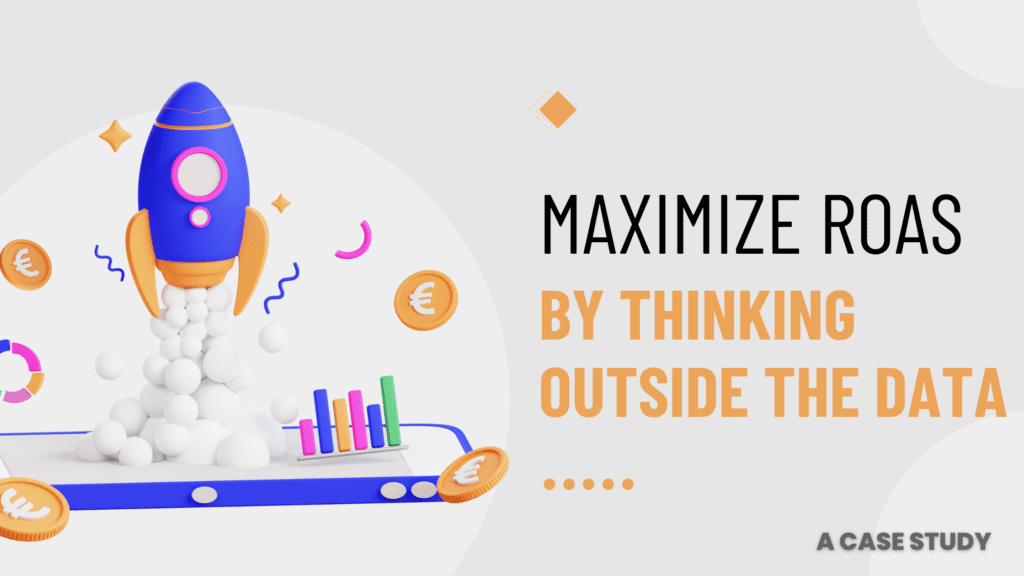How we used Accuweather to find the perfect customer and get 50x returns!
But first, a brief overview of DSP…

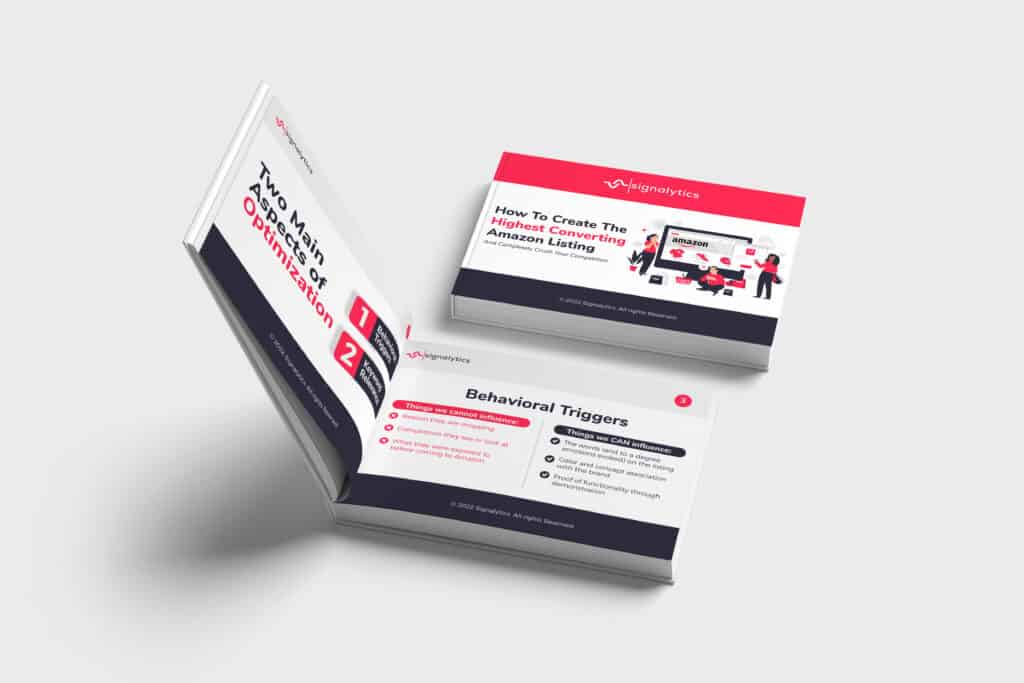
Get Our Internal Amazon Listing Optimization Operating System and increase conversions by 18%+ HERE 👇
What is Amazon DSP?
DSP stands for Demand Side Platform. Demand Side Platforms purchase advertising inventory through the use of software automation.
But…the entire Sponsored Advertising platform in Amazon is a software and many portions of it are automated. Is that not the same thing?
No it isn’t. This is because Amazon DSP purchases ad inventory over a number of digital real estates, not just Amazon’s platform. DSP has access to various online properties including external websites, media streaming services, email lists and much more.
In essence, Amazon’s DSP gives access to advertisers to purchase ad space across a broad swath of digital properties utilizing Amazon’s first-party audience data to target and executing the media buying automatically via the software.
This presents an awesome opportunity for advertisers to take advantage of Amazon’s unparalleled data and customer base.
Who can use DSP?
Amazon’s Demand Side Platform is available for “self-service” as well as managed. That means that, with a budget of at least $15,000 per month, you can have Amazon’s team manage your advertising.
The title “self-service” is a bit misleading however, as they don’t offer a Sponsored Advertising-like back end for sellers. Rather, in order to enjoy self service you must contract an agency who has access to the DSP platform. This is referred to as “enterprise self service.”
Interestingly, despite being limited to only accessing the software via an agency (or Amazon themselves) the platform is open to basically anyone. This means you do not have to be an Amazon seller to leverage DSP or it’s 1st-party data.
What can you do with DSP?
Aside from standard display ads on desktop and mobile, Amazon DSP also offers in-stream video ads, OTT ads (these show on streaming services), mobile interstitial ads (show only on mobile devices) with many more in the pipeline (such as audio ads and more).
Amazon DSP is regularly innovating new placements for ads, but many believe the real “magic” of the platform is in its targeting options.
Amazon DSP offers Amazon audiences based on:
- Behavior – This audience is built from shopping habits, such as purchases, add to carts, page views, clicks, etc.
- Lifestyle – This audience is built from habitual shopping habits in specific categories.
- Device – This audience is built based on the device the shopper is using.
- Audience lookalike – This audience is built based on user behavior and demographics that closely mimic those of a product or brand’s purchasers.
- Demographics – This audience is built from actual data provided to Amazon (likely through their credit card options) such as income level, marriage status, etc.
- In-market – This audience is like the lifestyle audience, but more drilled down. It takes into consideration other nuances to find people who may actually be in the market for the products being advertised.
- Contextual – This audience is built from shopper behavior based on real-time events and situational nuance.
Amazon DSP also offers custom audience options based on third-party advertiser data as well as remarketing data.
This means you can target shoppers based on third-party pixel data as well as competitor on-page behavior and much more.
Now, an overview of Accuweather …
What is Accuweather?
Accuweather bills itself as a global weather and media company run by expert meteorologists and entrepreneurs.
The platform is an amazing website, data feed, and service that collects data from government maintained weather stations across the globe. Further, Accuweather then takes that data and expands on it to create hundreds of metrics in real-time for its customers.
Accuweather provides this data and insights to municipalities, energy companies, marketers, logistics companies, and many more who can benefit from real-time weather and climate data.
What data does Accuweather provide?
Accuweather premium offers hourly updates on metrics such as:
- Temperature
- Air quality
- Wind speed
- Heat maps
- Hurricane alerts
- Storm alerts
- Much more
In addition, the platform also puts this data together to illustrate its impact on various sectors, industries, and areas. The data informs things such as health risks (risk of allergy issues, risk of common cold, etc) or whether conditions are ideal for things such as yard work.
How can Accuweather data be useful to consumer brands?
Let’s take a look at the metrics in a bit more detail and you’ll see how this is helpful for marketers and brands.
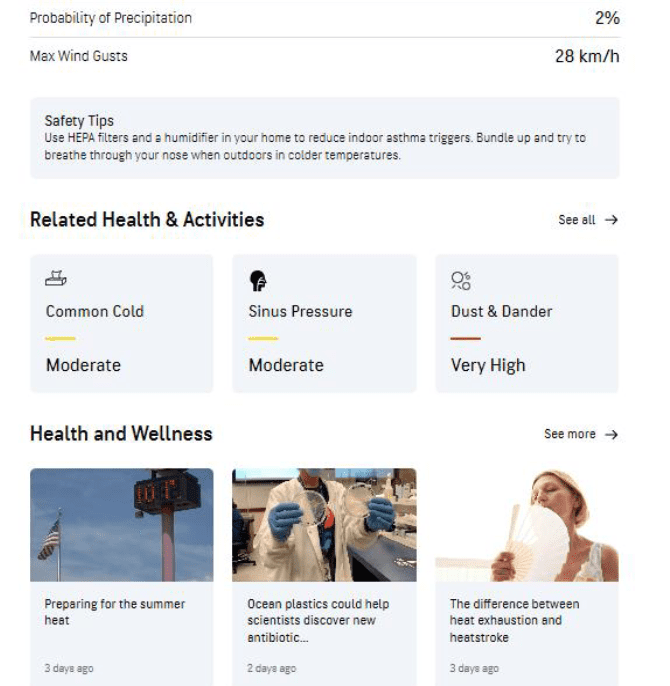
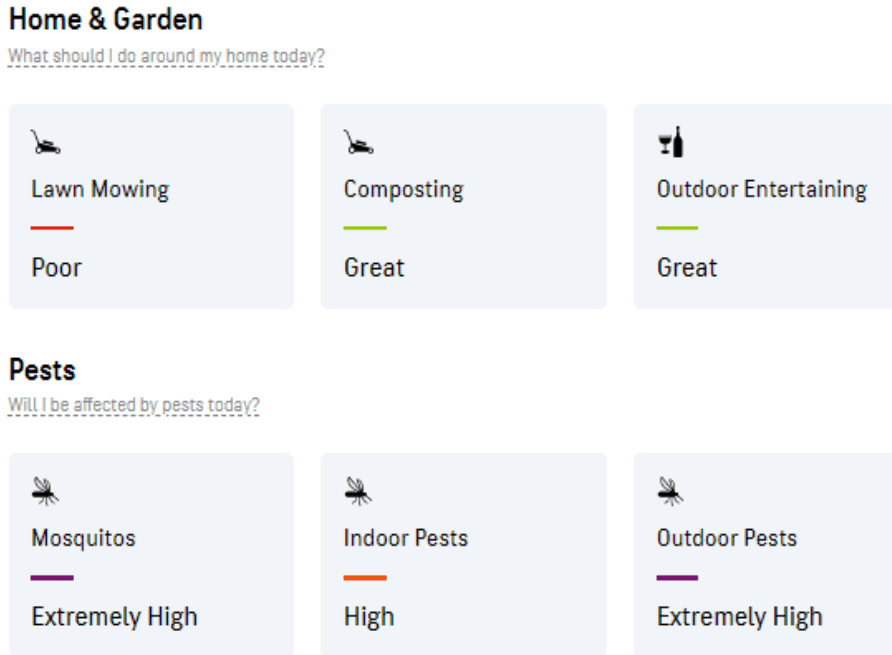
As you can see from the above screenshots, Accuweather gets pretty granular with what the weather and climate conditions mean for an area.
Now imagine, as a brand owner and marketer, how valuable it is knowing this information. Here are some examples:
- If you sell lawn maintenance tools, knowing what areas get the fastest and highest growing grass or falling leaves, and when would allow you to geo-target your ads.
- If you sell pest control products, knowing when pests are at their worst helps inform you on when to put the largest amount into your PPC budget.
The advantage of data and the problem with data dependance
Hopefully these examples have illustrated how powerful data can be. However, it also illustrates why it is a problem for advertisers to depend only on the data available to them on their ad platforms.
Despite Amazon DSP being cutting edge and innovative, a bit of creativity will always take your advertising to the next level. That’s exactly what the Signalytics team did for a client. By using data available outside of DSP and combining it with DSP’s vast targeting opportunities, we managed ROAS from 15x to as high as 50x.
And now, our case study methodology…
What was our logic for this case study?
The client sells portable air conditioners on the German marketplace. It’s important to note that this is a great product for a great location to begin with. Most German homes do not have air conditioning, so these portable units are a must-have during hotter months.
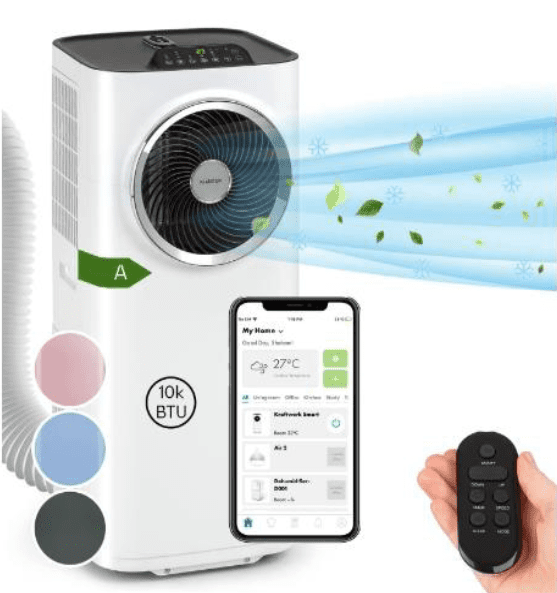
Remember, marketing and advertising enhance your selling efforts by exposing your product to a wider audience. But you still must have a quality product and fulfill a need or desire.
The Pareto Principle
The Pareto Principle simply states that roughly 80% of the consequences come from about 20% of the activity. Put another way, 80% of your results will come from 20% of your effort.
Rather than try to reinvent the wheel, it makes the most sense to go for “low hanging fruit” and do the most obvious activities that will yield good results. With that in mind, our team decided to utilize Accuweather data to identify the hottest locations in Germany during the summer months.
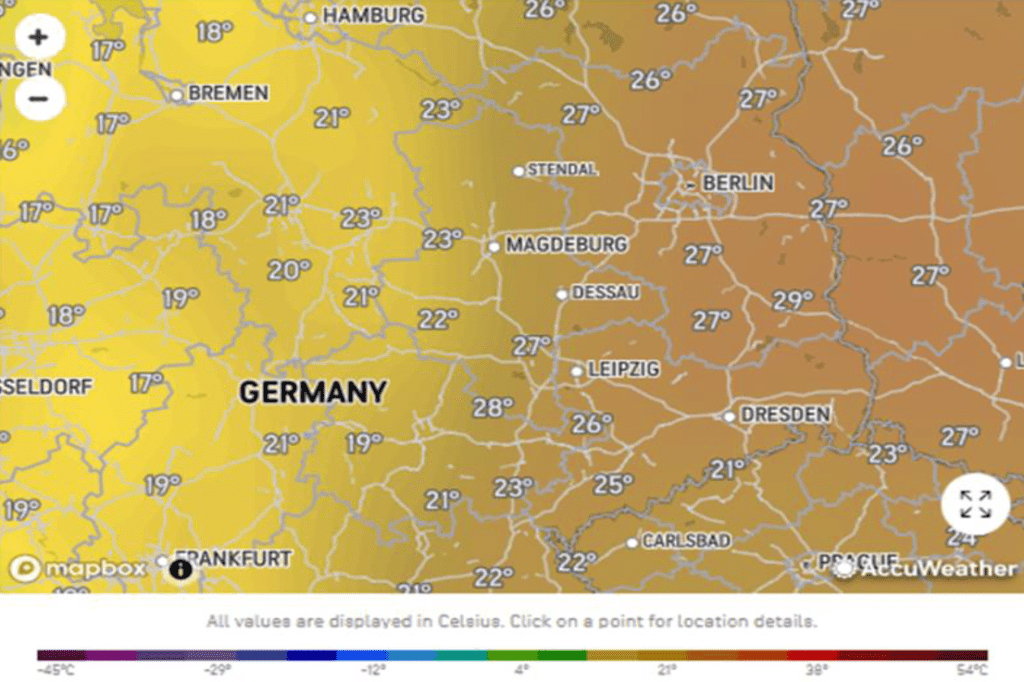
The logic was that, likely many homes may already have these portable air conditioning units (they are a must-have after all). However, in the hottest regions, old units, defective units, or under-performing units are most likely to get replaced. Furthermore, the heat would cause a sense of urgency.
How did we set up the campaigns?
After identifying the areas most likely to be the hottest during specific summer months, the next step was to use Amazon DSP’s powerful geo-targeting features to target those locations.
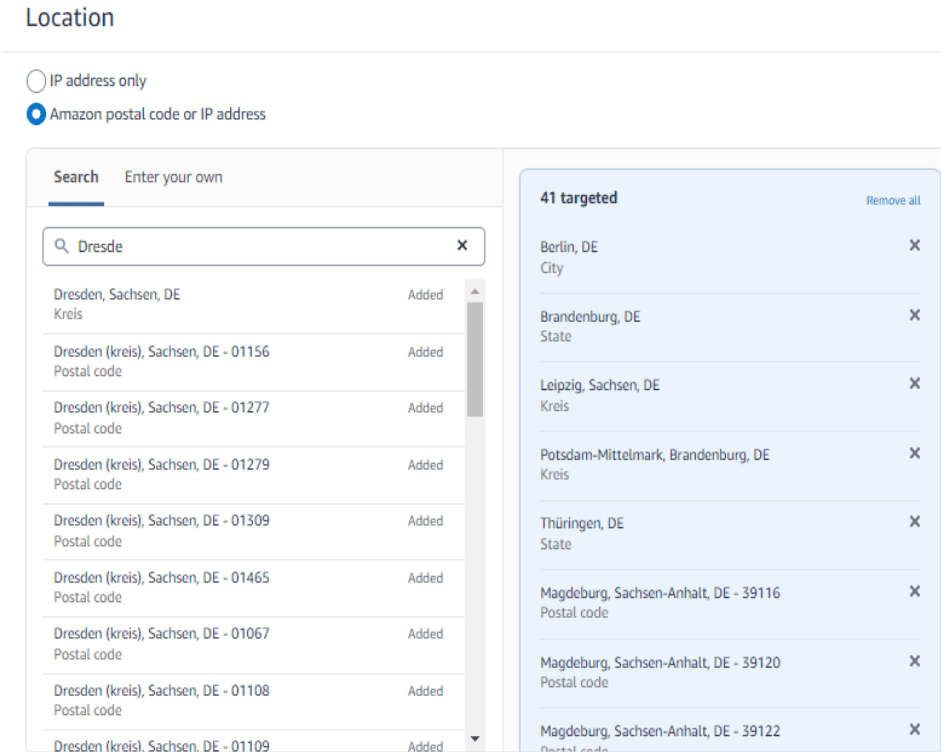
Once we identified the right locations, the next step was to identify the right audience. For this instance, these would be an in-market audience that Amazon has identified as most likely to purchase a portable air conditioner.
After creating the most relevant ad creatives for our ads, it was then time to run the campaigns.
We set up three campaigns; two in-market/lifestyle top-of-funnel campaigns targeting people who Amazon felt may be interested in the product. These are always good for brand awareness and to plant the seeds of interest, although ROAS is often lower.
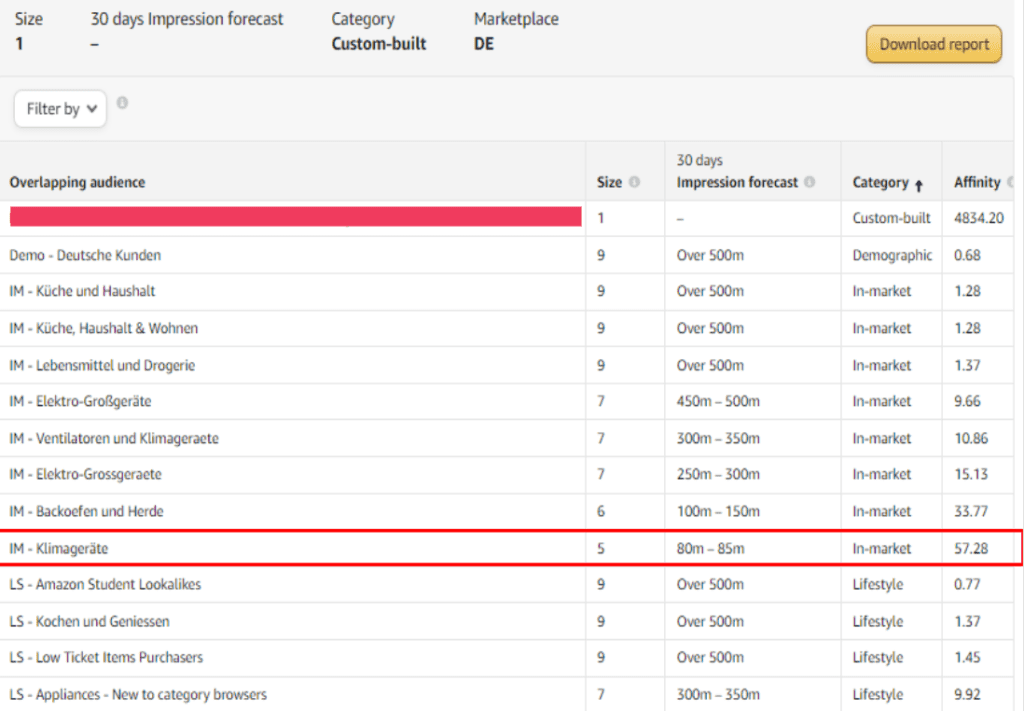
We also set up a retargeting campaign for shoppers who had shown interest in this product or others like it. These tend to have much higher purchase intent, as this is a bottom-of-funnel campaign, so ROAS is typically much higher.
Finally, the case study results…
Here were our Case Study results

As you can see, while the in-market/lifestyle campaigns achieved 7x to 9x ROAS, the retargeting campaign managed 50x!
Those were the overall campaign results, but if we drill down into individual ads, we can see some that performed even better.
This retargeting ad achieved an 80x ROAS.

This in-market ad achieved a 15x ROAS.
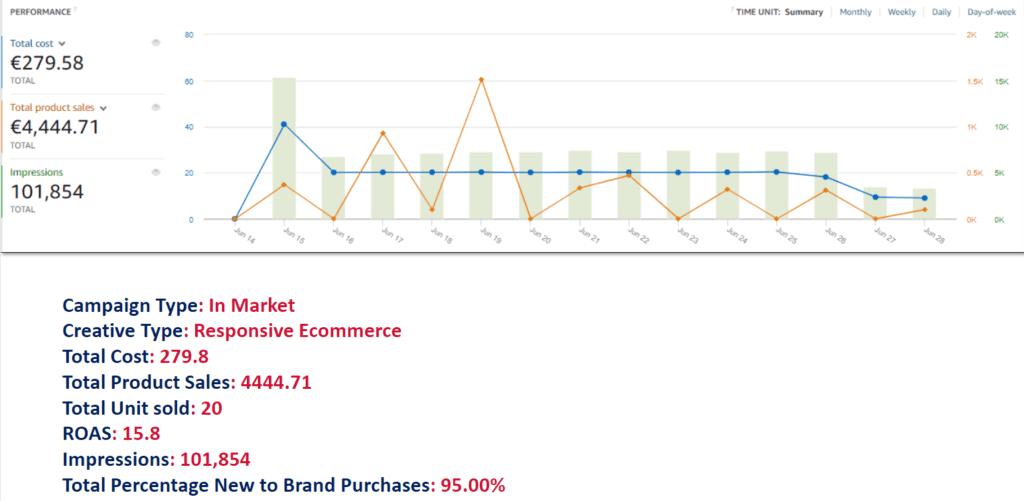
And here we have one that achieved a 35x ROAS.
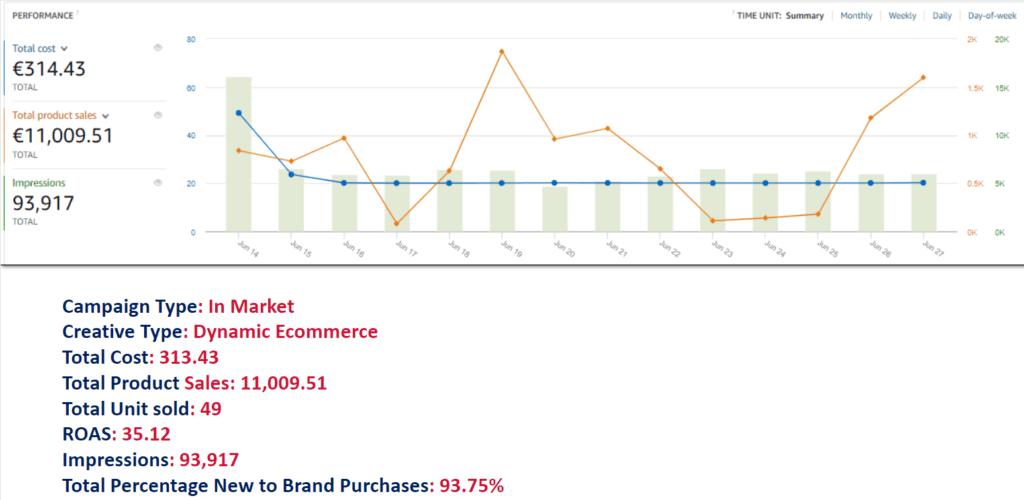
Takeaway
Amazon DSP is simply too powerful for any brand that wishes to scale on Amazon to ignore. By itself it is an amazing way to grow and increase profits. However, as illustrated in our case study, a little creativity can make DSP work ever more magic.
At Signalytics, we are dedicated to achieving results like these for every client. Our team is experienced and innovative so they work tirelessly to create the best opportunities possible for our advertisers.
Reach out and let our DSP team determine if they can discover hidden opportunities like this one for your brand.

